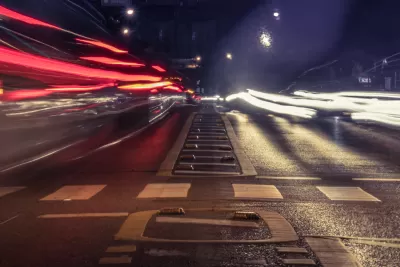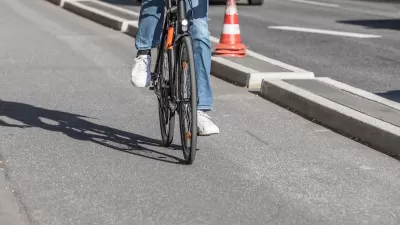When people feel unsafe, they walk less; with fewer pedestrians, walking becomes less safe.

Responding to a recent New York Times story highlighting the high rate of nighttime pedestrian deaths in the United States, Streetsblog’s Kea Wilson notes that the article, which identified some key factors in the road death crisis, missed one other point: “the dwindling number of walkers on our roads may itself be contributing to the nation’s fatality rates — and how much worse the death tolls look when seen in the context of how little Americans walk.”
While walking rates dropped by 36 percent between 2019 and 2022, pedestrian deaths increased by 20 percent. “And because walkers are generally safer in numbers, thinning that herd can have deadly consequences for anyone who remains.” As Wilson points out, the U.S. has a much higher per-mile pedestrian death rate than countries like the U.K. or the Netherlands.
Traffic engineer David Levinson calls this phenomenon as the “cycle of unwalkability,” wherein “the presence of cars worsens the conditions of pedestrians; worse conditions for pedestrians reduces walking; reduced walking increases the use of cars; repeat.”
“We don’t just need to install streetlights, redesign roads and cars, disable cell phones when their owners are behind the wheel, and give the poor the mobility and housing options they need to keep them out of harm’s way.” For Wilson, it will also take the rebuilding of “a culture of walking.”
FULL STORY: The Other Reason American Pedestrian Deaths are Rising After Dark

Alabama: Trump Terminates Settlements for Black Communities Harmed By Raw Sewage
Trump deemed the landmark civil rights agreement “illegal DEI and environmental justice policy.”

Planetizen Federal Action Tracker
A weekly monitor of how Trump’s orders and actions are impacting planners and planning in America.

Why Should We Subsidize Public Transportation?
Many public transit agencies face financial stress due to rising costs, declining fare revenue, and declining subsidies. Transit advocates must provide a strong business case for increasing public transit funding.

Understanding Road Diets
An explainer from Momentum highlights the advantages of reducing vehicle lanes in favor of more bike, transit, and pedestrian infrastructure.

New California Law Regulates Warehouse Pollution
A new law tightens building and emissions regulations for large distribution warehouses to mitigate air pollution and traffic in surrounding communities.

Phoenix Announces Opening Date for Light Rail Extension
The South Central extension will connect South Phoenix to downtown and other major hubs starting on June 7.
Urban Design for Planners 1: Software Tools
This six-course series explores essential urban design concepts using open source software and equips planners with the tools they need to participate fully in the urban design process.
Planning for Universal Design
Learn the tools for implementing Universal Design in planning regulations.
Caltrans
Smith Gee Studio
Institute for Housing and Urban Development Studies (IHS)
City of Grandview
Harvard GSD Executive Education
Toledo-Lucas County Plan Commissions
Salt Lake City
NYU Wagner Graduate School of Public Service




























